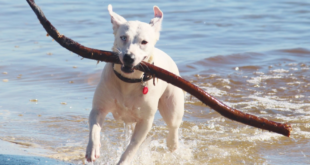Mistakes to Avoid When Training Your Dog – When it comes to training your furry friend, it’s essential to approach the process with care and knowledge. Proper training not only helps your dog become well-behaved and obedient but also strengthens the bond between you and your pet. However, there are common mistakes that many dog owners make during the training process, which can hinder progress and even lead to behavioral issues. In this article, we will discuss the top five mistakes to avoid when training your dog, ensuring a positive and successful training experience for both you and your canine companion.
Table of Contents
Mistake 1: Inconsistent Training
Consistency is key when it comes to training your dog. One of the biggest mistakes dog owners make is being inconsistent with their training methods and expectations. Dogs thrive on routine and structure, and when they receive mixed signals or unclear commands, it can lead to confusion and frustration. To avoid this mistake, establish a consistent training schedule and use the same commands and cues throughout the training process. This will help your dog understand what is expected of them and facilitate faster and more effective learning.

Mistake 2: Lack of Positive Reinforcement
Positive reinforcement is a powerful tool in dog training. Unfortunately, some dog owners make the mistake of focusing too much on punishment or negative reinforcement, which can have detrimental effects on the dog’s behavior and overall well-being. Instead of solely focusing on what your dog does wrong, make sure to reward and praise them for their successes. Use treats, verbal praise, and physical affection to reinforce desired behaviors. This positive approach will motivate your dog to repeat those behaviors and make the training experience more enjoyable for both of you.
Mistake 3: Punishment-Based Training Methods
Using punishment-based training methods can have severe consequences for your dog’s emotional well-being and can even lead to aggression or fear-based behaviors. Harsh punishments, such as yelling, physical corrections, or shock collars, can damage the trust between you and your dog. It is essential to remember that dogs respond best to positive reinforcement and gentle guidance. Opt for reward-based training techniques and focus on redirecting unwanted behaviors rather than punishing them. This approach will create a positive and loving environment for your dog to thrive in.
Mistake 4: Ignoring Socialization
Socialization is a crucial aspect of dog training that is often overlooked. Dogs are social animals and need exposure to different people, animals, and environments to develop good social skills. Failing to properly socialize your dog can result in behavioral issues such as fearfulness, aggression, or anxiety. Take the time to introduce your dog to new experiences gradually. Allow them to interact with other dogs and people in controlled and positive environments. Socialization not only helps your dog feel more comfortable in various situations but also prevents future behavior problems.
Mistake 5: Skipping Basic Obedience Training
Basic obedience training forms the foundation of a well-behaved and disciplined dog. Unfortunately, some owners make the mistake of skipping or neglecting this essential training. Basic commands like “sit,” “stay,” “come,” and “heel” are not only useful but also crucial for the safety of your dog and others around them.
Without proper obedience training, your dog may struggle to follow instructions, exhibit unruly behavior, or even pose a risk to themselves and others. Dedicate time and effort to teaching your dog basic commands using positive reinforcement techniques. This will set a solid foundation for further training and ensure that your dog understands and respects your authority.
Conclusin of Mistakes to Avoid When Training Your Dog
In conclusion, training your dog is a rewarding and necessary endeavor. By avoiding these common mistakes, you can create a positive and successful training experience for both you and your furry companion. Remember to be consistent, use positive reinforcement, avoid punishment-based methods, prioritize socialization, and never skip basic obedience training.
FAQs
- How long does it take to train a dog? Training duration varies depending on the dog’s breed, age, temperament, and previous experiences. Some dogs may learn quickly within a few weeks, while others may take several months. Patience and consistency are key.
- Is it necessary to hire a professional dog trainer? Hiring a professional trainer can be beneficial, especially for complex behavioral issues or specialized training. However, many basic training techniques can be successfully implemented by dedicated owners with proper guidance and resources.
- What if my dog doesn’t respond to positive reinforcement? Every dog is unique, and some may require different motivators. Experiment with various rewards, such as treats, toys, or praise, to find what resonates with your dog. Additionally, seek guidance from a professional trainer if needed.
- Can an older dog be trained? Absolutely! Dogs of any age can learn new behaviors and skills. While puppies may have a slight advantage in terms of flexibility and adaptability, older dogs can still benefit from training and behavior modification techniques.
- How can I address specific behavior problems during training? If you encounter specific behavior problems during training, it is advisable to consult with a professional dog trainer or a veterinary behaviorist. They can assess the situation and provide customized strategies to address and modify the problematic behavior.
Remember, training your dog is a journey that requires patience, consistency, and a deep understanding of your furry friend’s needs. By avoiding common mistakes and implementing positive and reward-based methods, you can build a strong and loving bond with your dog while fostering good behavior and obedience.
 Treat For Dog – Brain Training for Dogs, Dog Training & Obedience Discover Treat For Dog and get your pup on the path to smarter, happier, and healthier living with brain training for dogs.
Treat For Dog – Brain Training for Dogs, Dog Training & Obedience Discover Treat For Dog and get your pup on the path to smarter, happier, and healthier living with brain training for dogs.




